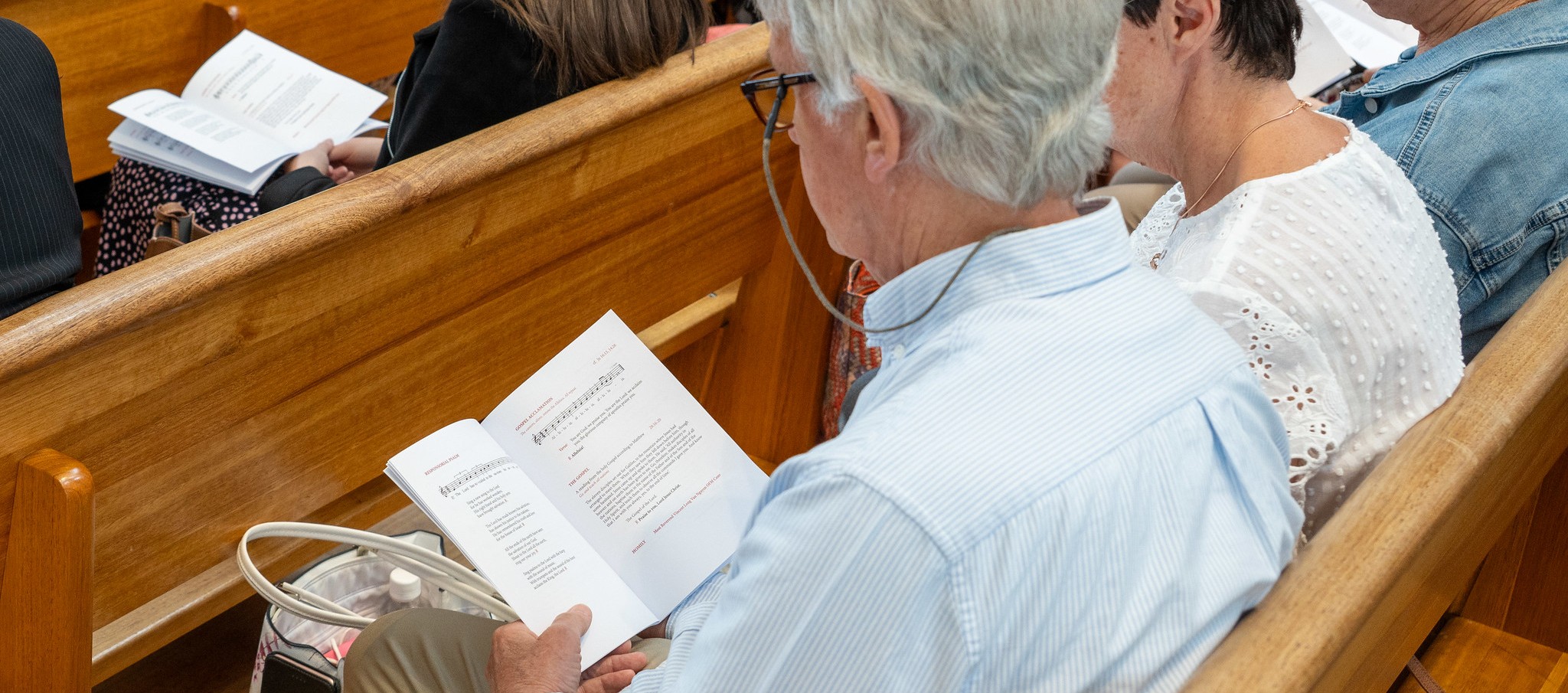Creating Booklets as Aids to Participation in the Liturgy
National Liturgical Council

Introduction
Worship aids assist members of the assembly in their task of full, active, and conscious participation in the celebration. They serve to draw those using them deeper into prayer yet must always support (never distract from) the liturgical action.
Why do we use worship aids? What are the advantages?
Since the rites of the Church have unique ritual moments with special musical acclamations and responses, it is helpful to prepare worship aids to facilitate assembly participation and to assist in liturgical catechesis, not only for the regular members of the parish in which the rituals take place but for guests who may be attending the liturgy.
Even if a parish does not print a worship aid regularly, sacramental rites call for one—doing so is a gesture of hospitality, welcome, and evangelising catechesis.
Since the sacramental rites are communal celebrations, participation aids allow the congregation to follow the ritual with understanding.
Some words of caution…
Worship aids are not scripts.
They should not include every word and direction of the liturgy.
Full participation requires engagement and visual focus on the liturgical action taking place, rather than being fixed on a printed booklet.
Liturgy of the Word
It is important for members of the assembly to fix their eyes upon the person proclaiming the Scriptures in the midst of the community from the sacred book, rather than reading from a printed sheet which can be a very individual experience.
The readings at Mass take on a special quality in being both written and spoken: as written text, the pericopes convey a sense of authority and permanence; as spoken words they embody the qualities of presence, connection and involvement. It is important to print only the scripture references, not the full text of the readings, unless some pastoral reason suggests otherwise.
Making Choices
The content of a worship aid can vary depending on the solemnity of a Mass or on the occasion.
Keep in mind the ultimate function of the booklet – to promote full and active participation. It is necessary to consider the particular community the worship aid is being prepared for.
Parish Mass
- Headings for each of the ritual moments
- Dialogues and responses of the assembly
- It is not necessary to include prayers or responses of the Mass that are generally well known. Exceptions to this may arise when the parish assembly includes hearing impaired persons, or people with English as a second language who would otherwise find it difficult to participate in the Mass.
- Reference and one-line synopsis of each reading
- In general, print only the references for the readings rather than the full text. This encourages people to look at the reader and listen to the text being spoken, making the reception of the text more a communal rather than an individual activity.
- Translations of the texts if multiple languages are used
- Words to all hymns, litanies, and sung parts of the Mass
- Copyright acknowledgements for music and texts
Additional things that may be included for special occasions:
Less content is required for a regular parish Mass than a wedding, baptism or funeral liturgy where many members of the congregation may be unfamiliar with common responses and gestures.
- It may be appropriate to include instructions about when to sit, stand, kneel, to help people participate more actively.
- Perhaps a note about Communion if a Mass where many non-Catholics are present
- Keep in mind the communal nature of the celebration and the purpose of the booklet
- For more solemn occasions it may also be appropriate to include a note of thanks to the celebrant, musicians, readers, hospitality ministers, and others who helped to prepare the celebration.
- If there is a celebration after the liturgy, it can be helpful to include details of the venue and any other special directions.
